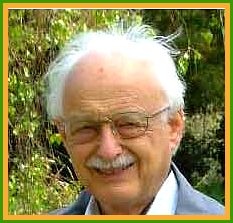National health institute hears testimony on Wind Turbine Syndrome (Australia)
Jun 10, 2011
I’m standing here because there is a problem,” Ms Bernie Janssen told the seminar. Ms Janssen says she didn’t object to the wind farm at Waubra, in Victoria in 2009, until she began feeling unwell.
“In May-June 2009 I woke in the night with rapid heartbeat, shortness of breath. I didn’t associate it then with wind turbines. In July, my General Practitioner noticed that my blood pressure was elevated.” She says she’s also felt body vibration, hypertension, tinitus, cognitive depression, sleep disruption, ear and head pressure.
She found out 37 people living up to 4 km away from turbines began experiencing symptoms at about the same time.
(This image was not used in the article, below)
·
—Sarina Locker, ABC Rural (6/9/11)
“I’m standing here because there is a problem,” Ms Bernie Janssen told the seminar.
Ms Janssen says she didn’t object to the wind farm at Waubra, in Victoria in 2009, until she began feeling unwell.
“In May-June 2009 I woke in the night with rapid heartbeat, shortness of breath. I didn’t associate it then with wind turbines. In July, my GP noticed that my blood pressure was elevated.”
She says she’s also felt body vibration, hypertension, tinitus, cognitive depression, sleep disruption, ear and head pressure.
She found out 37 people living up to 4km away from turbines began experiencing symptoms at about the same time.
The National Health and Medical Research Council’s (NHMRC) hearing comes just one week before the Senate Inquiry in the impacts of windfarms is tabled in Parliament.
Many studies on so-called wind turbine syndrome have been based on interviewing sufferers.
But a Portuguese environmental scientist is studying the physical effects of low frequency noise on the body.
Professor Mariana Alves-Pereira, PhD
Dr Mariana Alves-Pereira of Lusofona University in Portugal has been studying vibroacoustics [Vibro-Acoustic Disease = VAD]. [Editor’s note: Click here for Dr. Nina Pierpont’s clarification of the difference between Vibro-Acoustic Disease and Wind Turbine Syndrome.]
“We assess the effects of noise based on medical tests, so they’re objective medical tests.
“If we go in what we’ll do is get echo-cardiograms, we’ll do brain studies.”
Dr Alves-Pereira has degrees in physics, biomedical engineering and a PhD environmental science.
She bases her research on her earlier work on aircraft workers, dating back to the 1980s who’ve been exposed to high levels of noise, up to 200Hz.
“Noise in the aeronautical industry is very rich in low frequency components,” she says.
She found a specific set of symptoms associated with people exposed to low frequency noise, but says these levels are much lower than the levels of low frequency noise in houses near windfarms.
She says they studied one family and their horses near a windfarm, and the biological response of their tissues which she says relates to exposure to low frequency noise.
Geoff Leventhall, PhD
UK-based noise and vibration consultant Dr Geoff Leventhall says the media has been running scare stories about infrasound since the 1970s.
He cites NASA’s research with Apollo space program found no impact.
“The sort of energy exposure from the NASA work over 24 years would take a few thousand years to get from wind farms at the low levels that they have.”
He rejects the theory of a direct physiological effect of infrasound. He says it’s an assumption. [Editor’s note: Leventhall is a physicist, not a physician or clinician of any sort. Moreover, he regularly consults for the wind industry, and has done so for years. You can get a sense of the man’s grasp of WTS from this correspondence, along with this article and this and this and this.]
He says what annoys people is the audible swish of the blades not infrasound.
Renowned anti-smoking campaigner, public health Professor Dr Simon Chapman has entered the debate and says it’s a noisy minority who say they suffer from the noise.
Dr Chapman argues compensation from wind turbines situated on your farm could be the antitode.
“People who move to the country, often will feel [they] don’t want their environment disturbed . . . and they’re annoyed to see wind farms unless they’re benefitting economically from them.”
He doesn’t see the need for more research, because it might hold up development of wind power.
Despite the scepticism, Australia’s peak body supporting health research the NHMRC will conduct another review of the evidence over the next 12 months.



